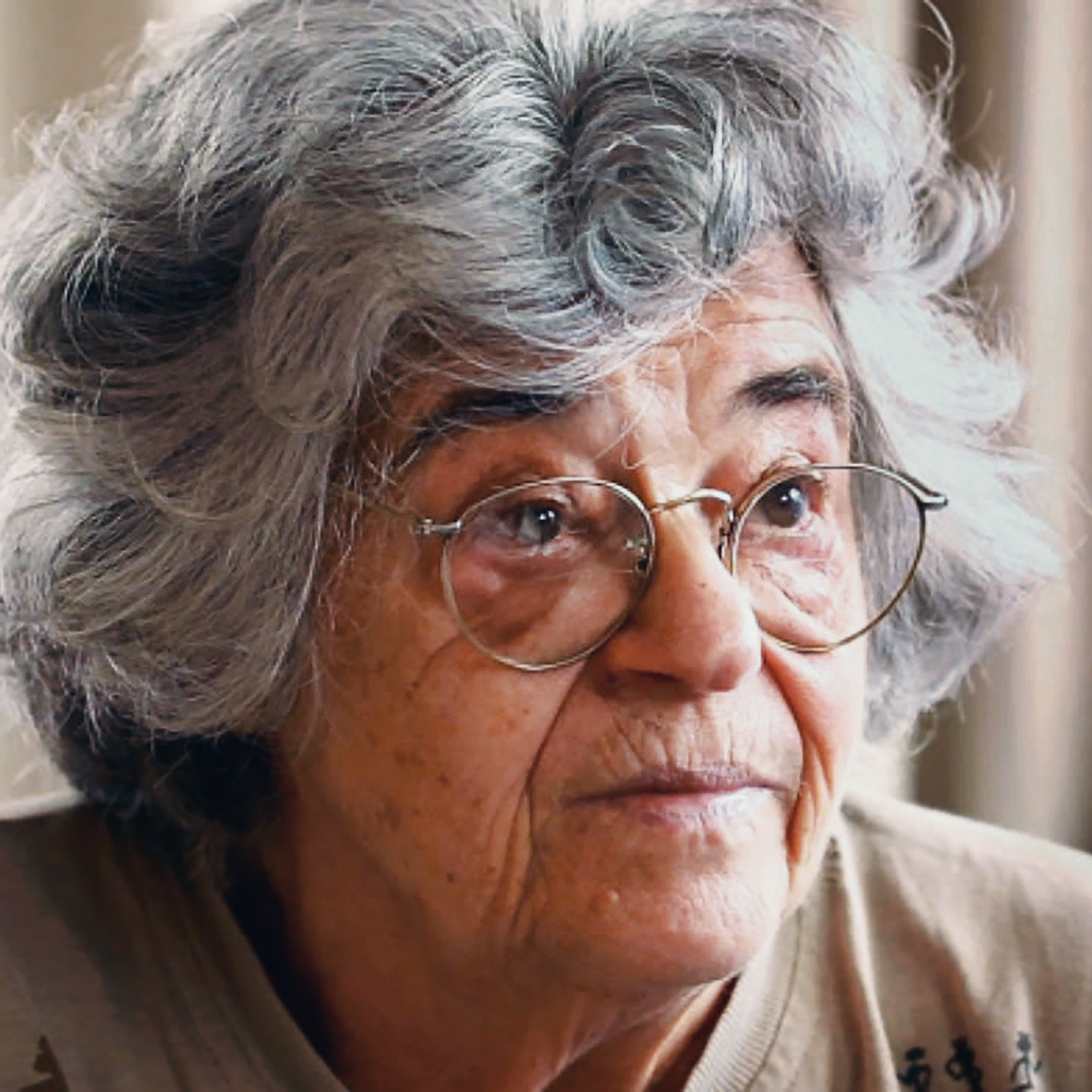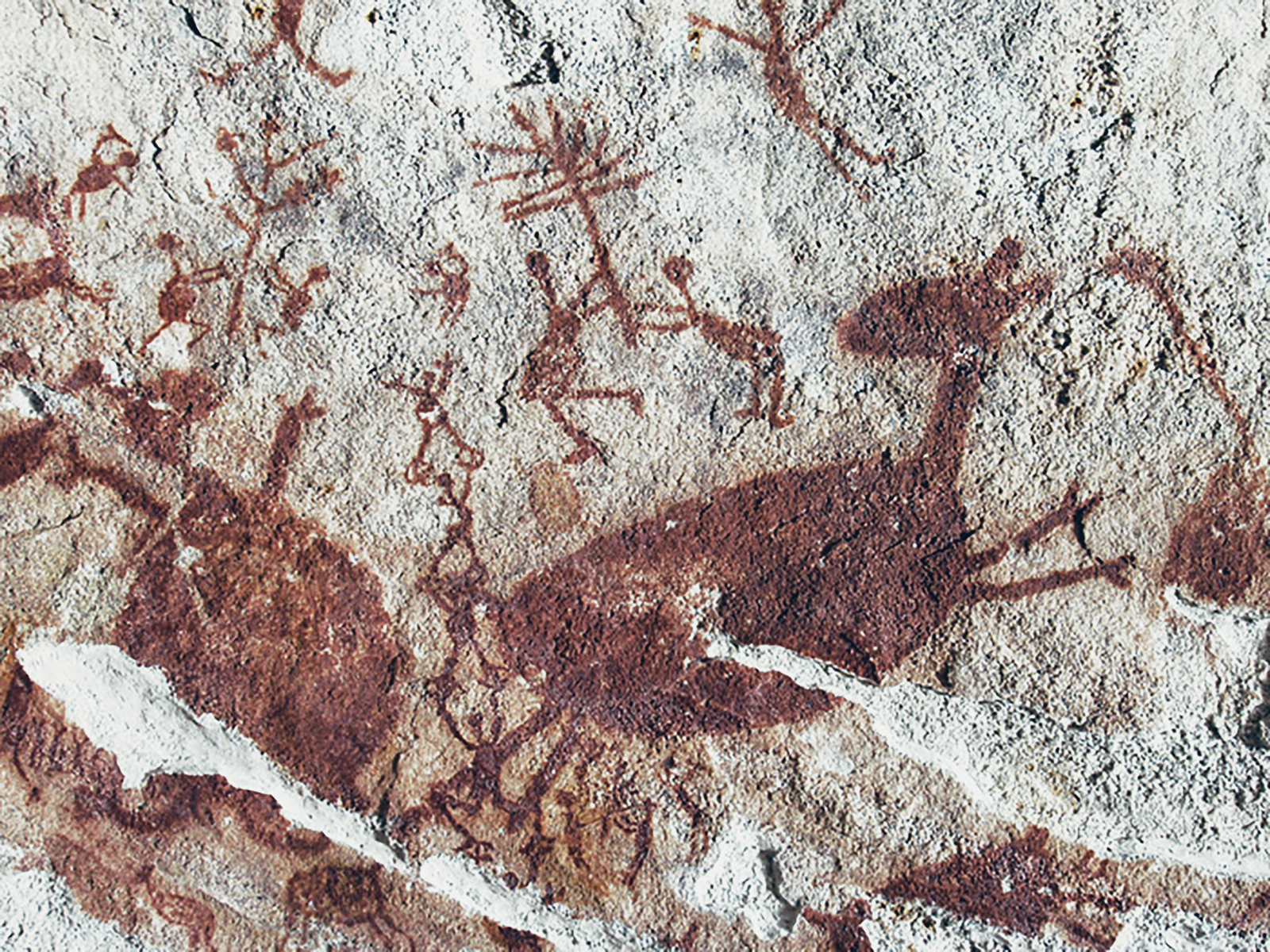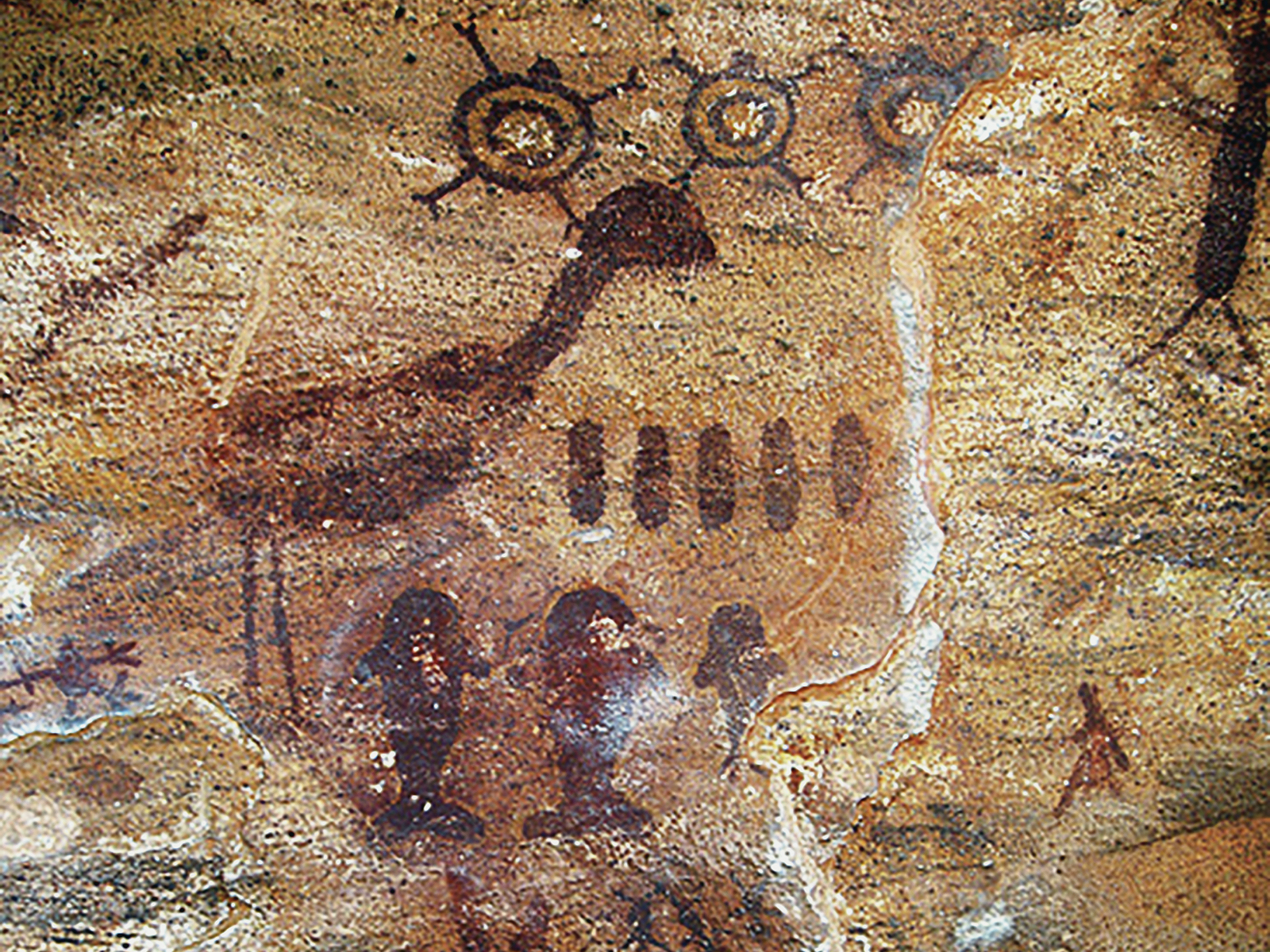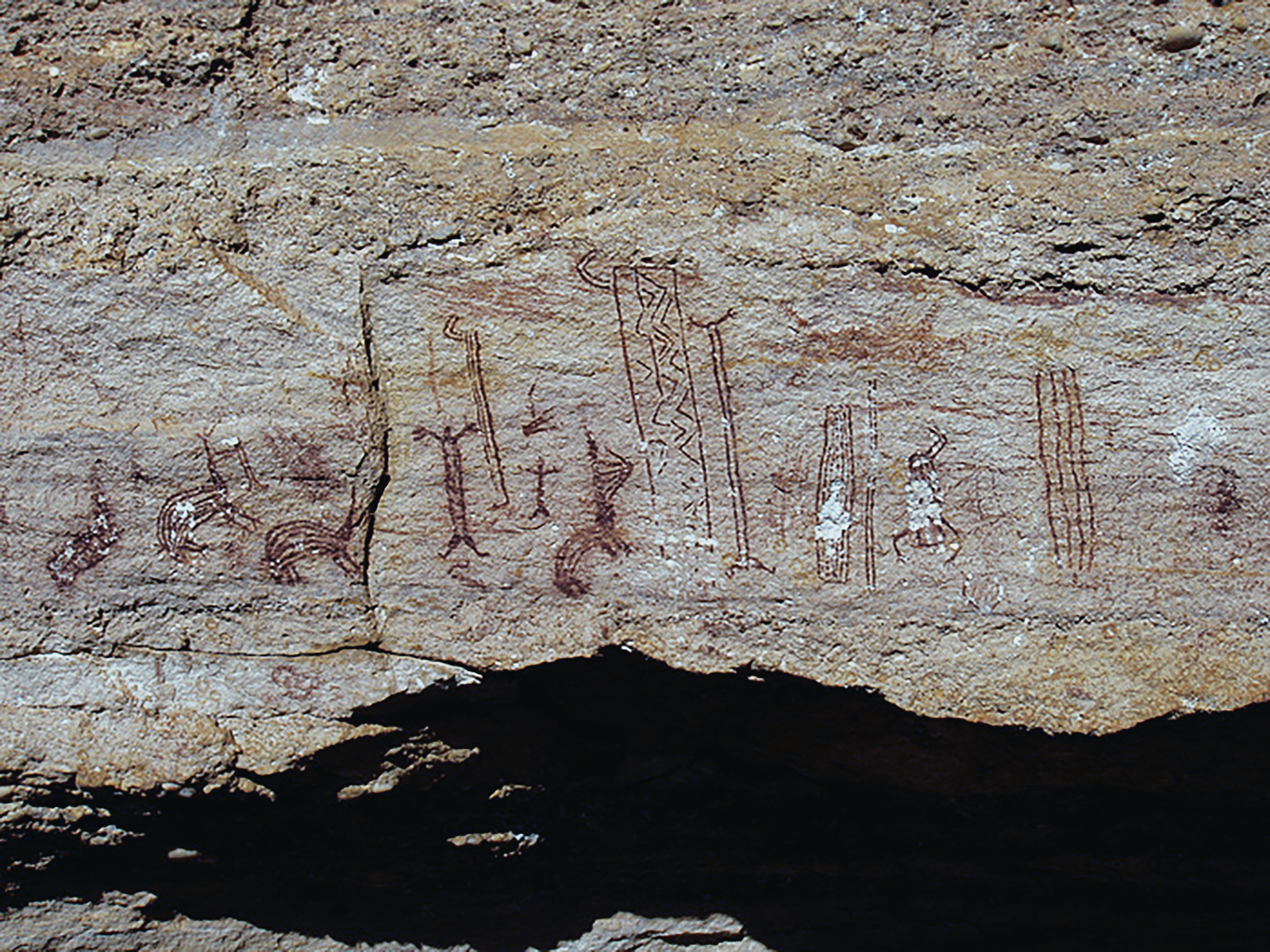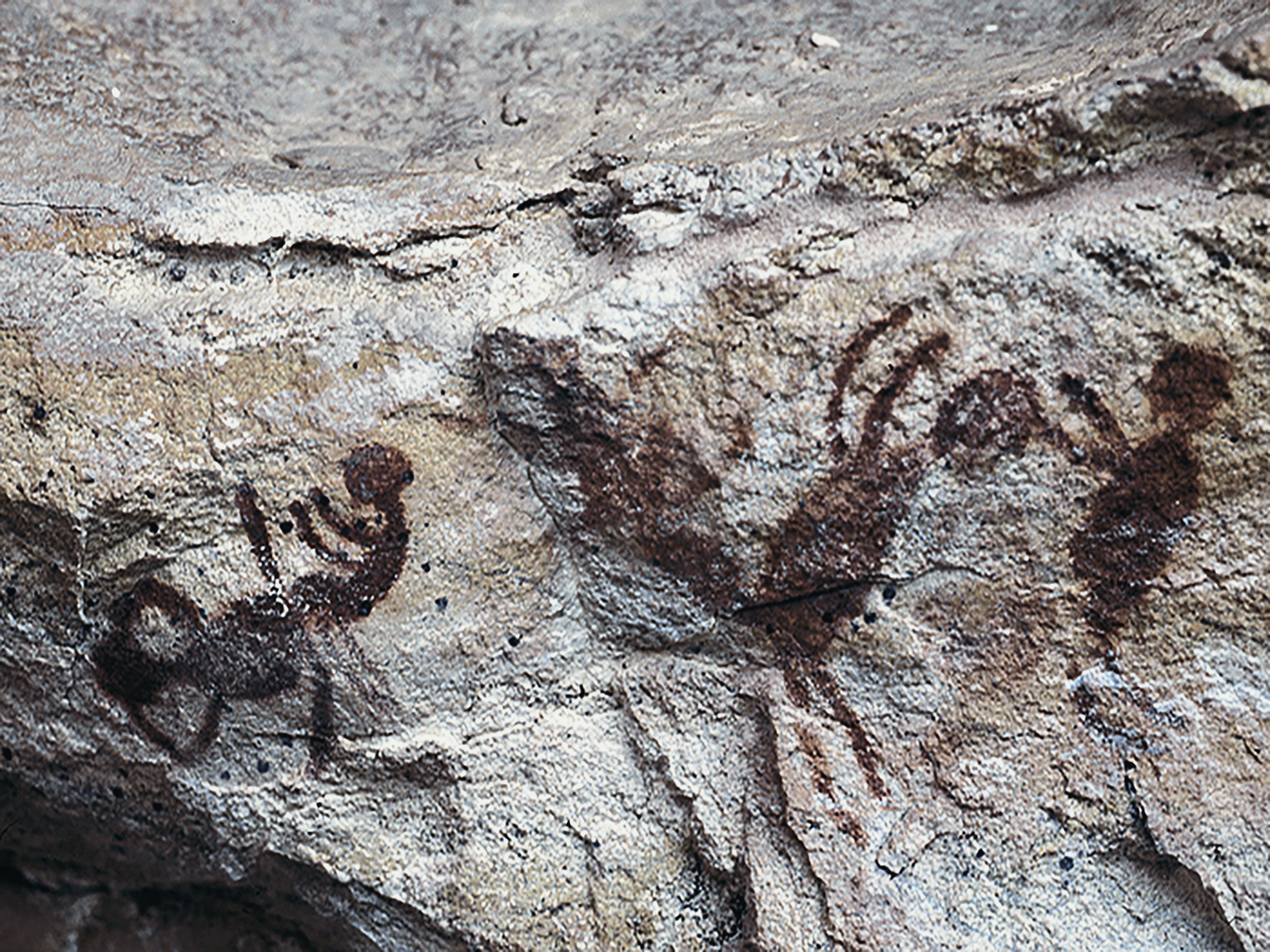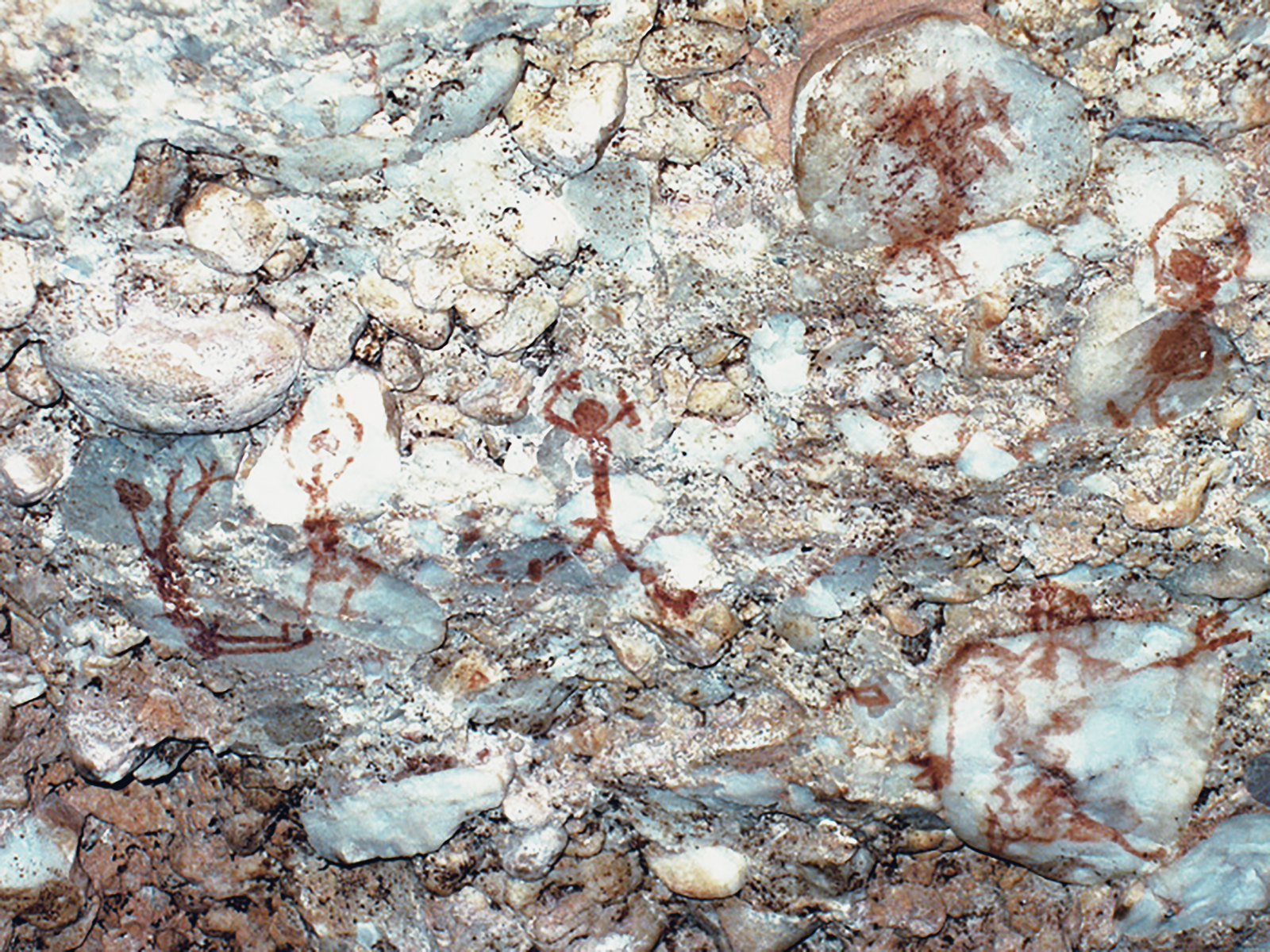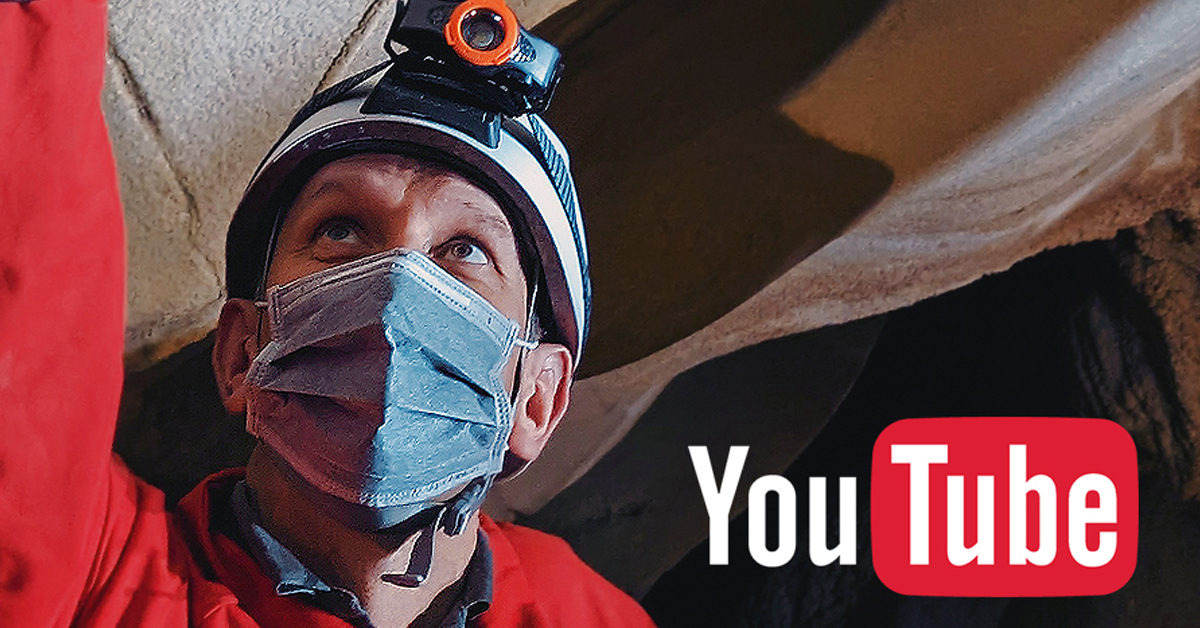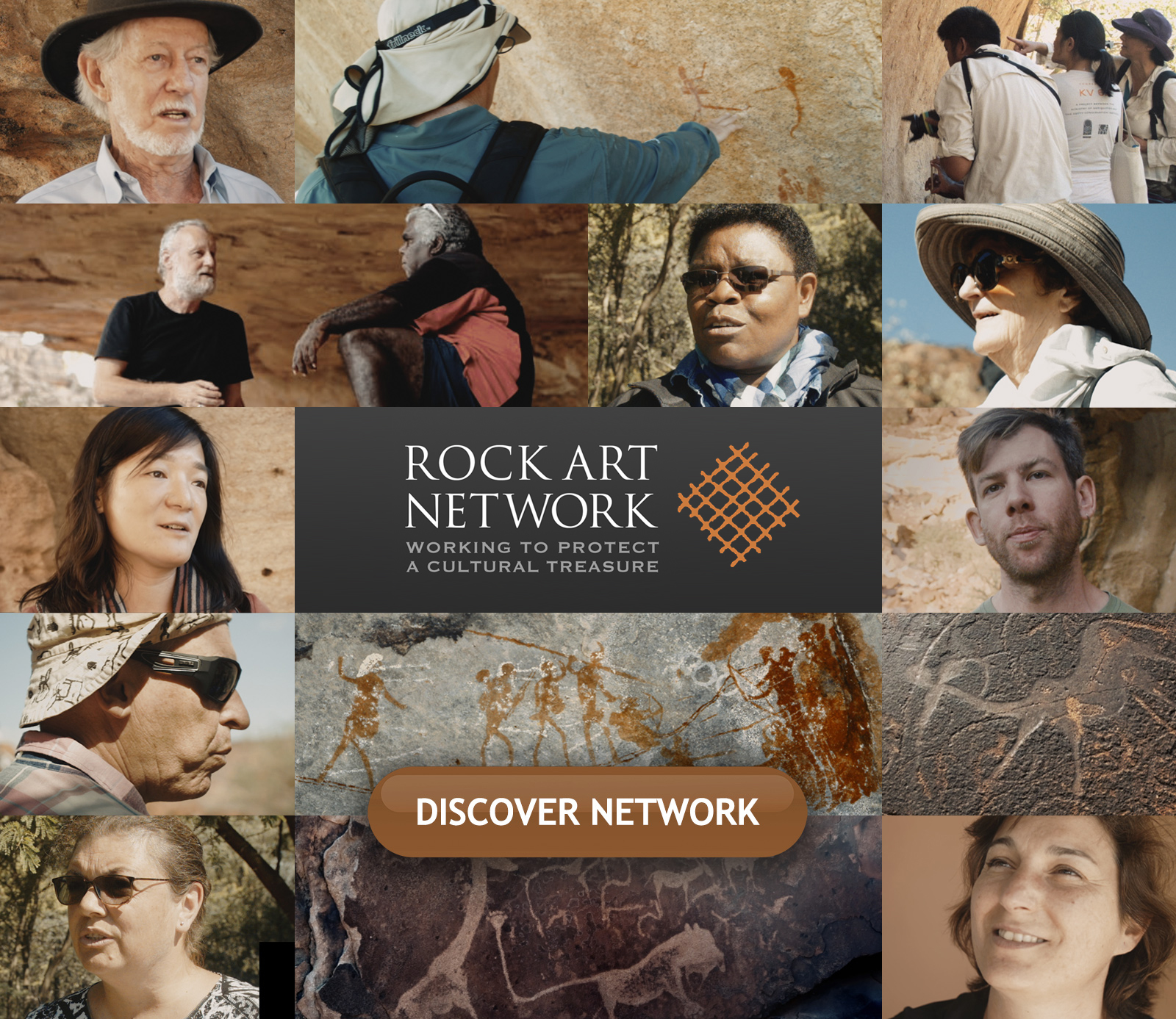
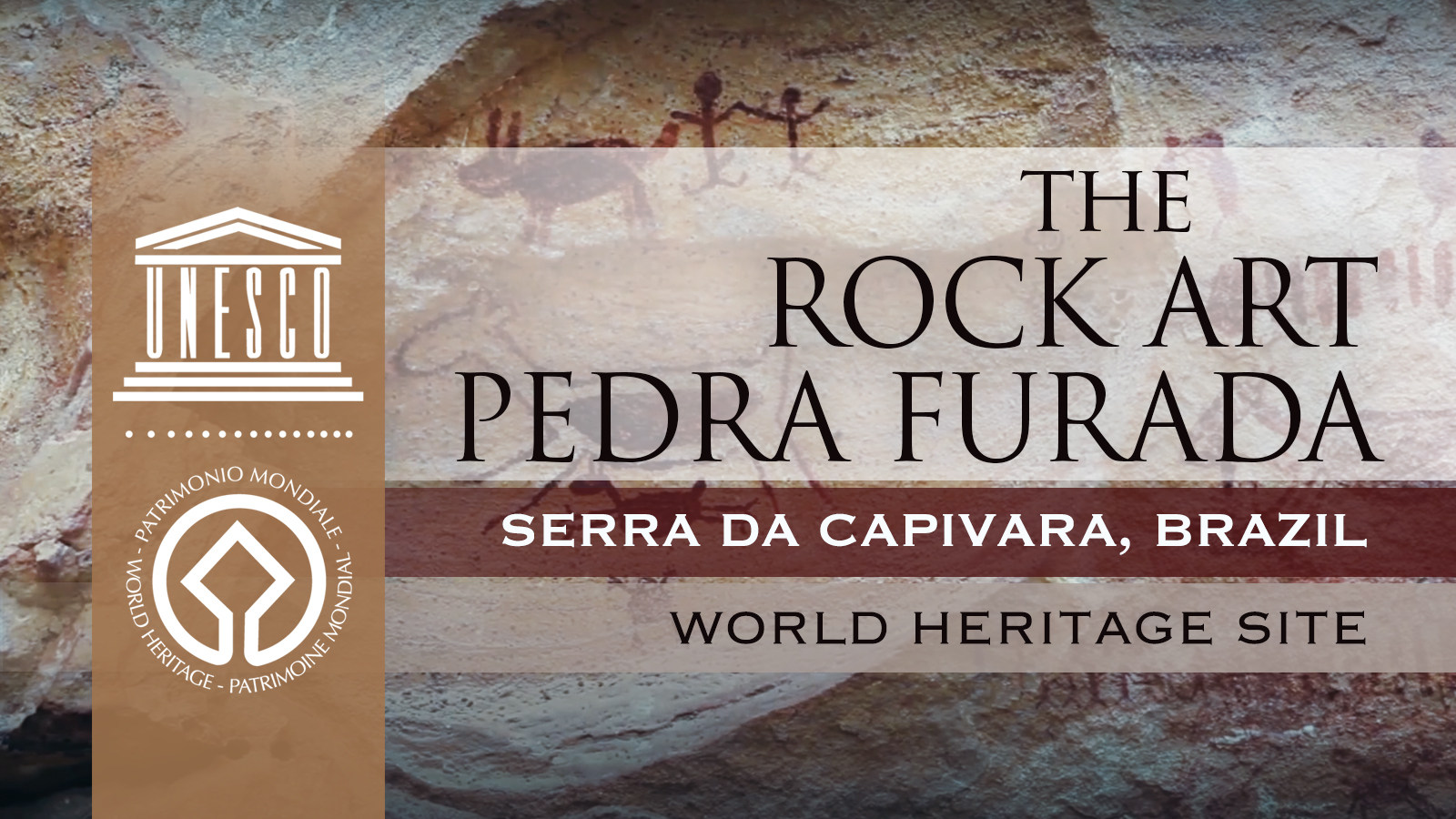
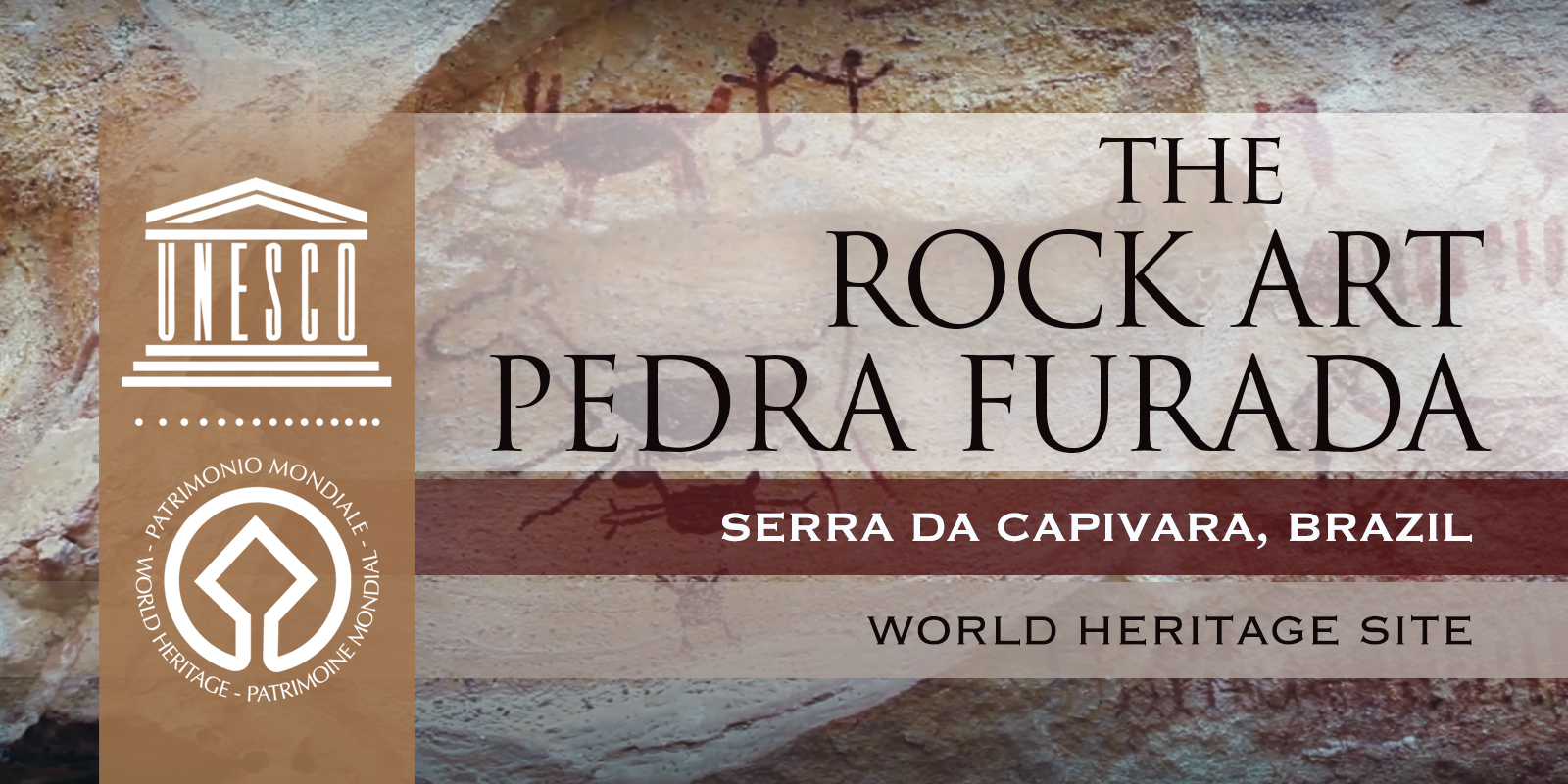

The best known archaeological site of Serra da Capivara is Pedra Furada, a rock art shelter with over 1,150 images and thousands of artifacts. Her theories about the archaeology and the rock art are controversial, as she questions the putative dates for the relatively recent occupation of the Americas by anatomically modern humans, proposing a date in excess of 45,000 years ago, based on her archaeological research at the sites.
The rock art of Pedra Furada depicts the use of spearthrowers and and traps to hunt. Archaeologists have found a lithic industry incorporating quartzite, flint, chalcedony, and quartz. The number of types of tools is limited and their design is not overly elaborate.
The paintings, termed 'Nordeste (Northeast) Tradition', date to approximately 12,000 years BP. The main characteristic of the Nordeste Tradition are narrative figures representing actions of daily life (leisure activity - 'actions ludiques'), hunting and ceremonial events, as well as abstract and geometrical designs. Guidon estimates that the Nordeste Tradition endured over 6,000 years, during which time the style evolved. The painting techniques varied, from an early use of fingers to a more refined and intricate use of brushes made from animal fur and plant fibres.
Indirect dating by associated stratigraphy at the Toca do Baixao do Perna shelter has been obtained from charcoal at the top of a hearth found in the sediment covering a fallen painted fragment, dated 9,650 +/- 100 BP, whilst charcoal at the bottom of the hearth 20 cm below, dated 10,530 +/- 110 BP [Guidon & Delibrias 1986]. Excavations at the Toca do Boqueirao shelter yielded a rock fragment with red painted lines [uncharacteristic of the Nordeste Tradition]. Charcoal from a hearth found in the same strata gave dates of 29,860 +/- 650 years BP (GIF 6651), which according to Guidon suggests that at least 29,000 years BP prehistoric people in this area prepared pigments.
The pigments used in the rock art were prepared with locally sourced reddish ochre (iron oxide) and clay of different colours. The ochre was the most used pigment, in various tones. Other colours were also used, such as yellow, white, black (analysed as burned bones) and gray. The pigment’s exact consistency shows no sign of leaching. Pigment would have been prepared on site; excavations at the Toca do Sítio do Meio shelter uncovered a piece of pigment-stained sandstone with a central concavity used as a mixing palette. Associated charcoal was radiocarbon dated to 8,920 +/- 50 years BP.
Niède Guidon is a Brazilian archaeologist known for her work in pre-historic archeology of South American civilizations and her efforts to secure the conservation of the World Heritage Site Serra da Capivara National Park.
Educated in Brazil and France, she worked in Paris for most of her career. She was the founding president of the Fundação Museu do Homem Americano (American Man Museum Foundation), a non-profit organization created to support the Serra da Capivara National Park, a World Heritage Site. In 2005, she was one of the 1000 women nominated for the Nobel Peace Prize.
Since the early 1970s, Guidon has conducted archeological research in Southeast Piauí, where thousands of archeological sites have been discovered. Her dates from those sites indicate that human settlement preceded North America's Clovis people by tens of thousands of years. In the late 1980s, these findings challenged the mainstream theory of Clovis First and have generated debate in the academic archeology community.
Guidon has won several national and international awards, including the Prince Claus Award and the Ford conservation and Environment award.
→ Subscribe free to the Bradshaw Foundation YouTube Channel
→ South America Rock Art Archive
→ Rock Art of Serra da Capivara
→ Rock Art of Pedra Furada
→ World Heritage Site of Cueva de las Manos (The Cave of the Hands)
→ Rock Art of Bolivia
→ The Rock Art of Santa Catarina
→ The Checta Petroplyphs - Peru
→ Bradshaw Foundation
→ Rock Art Network
